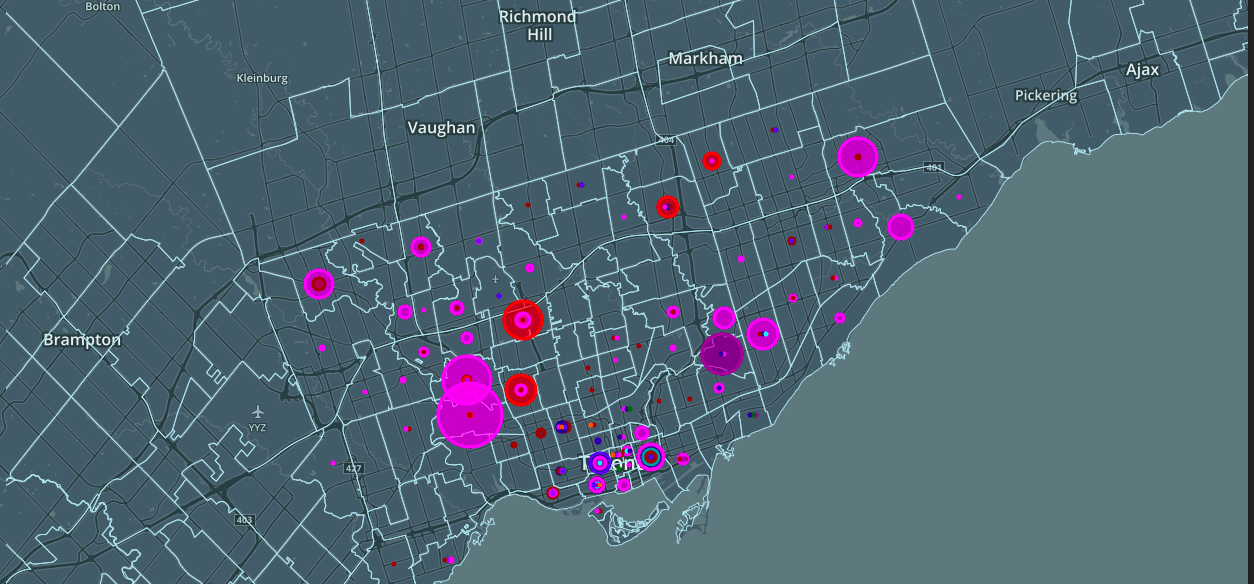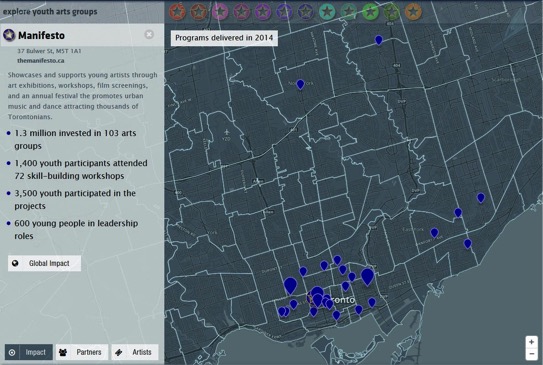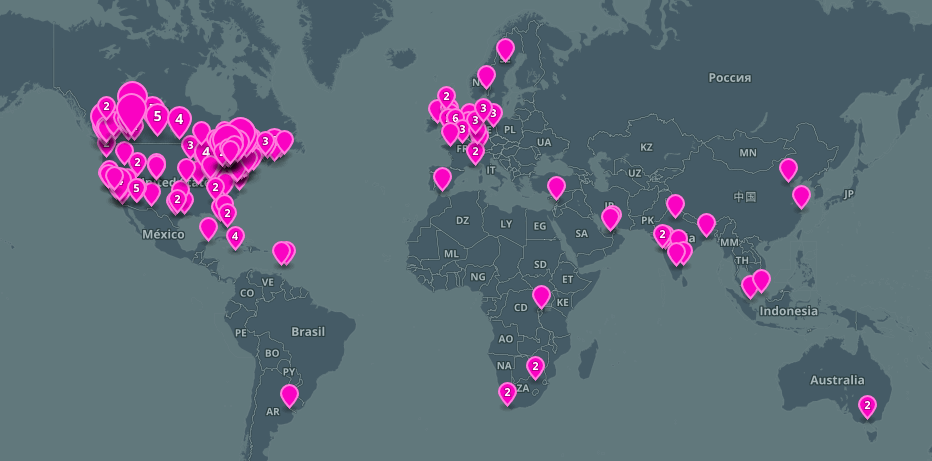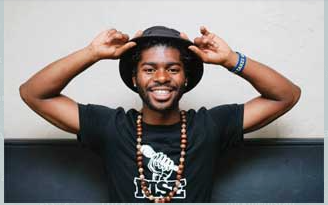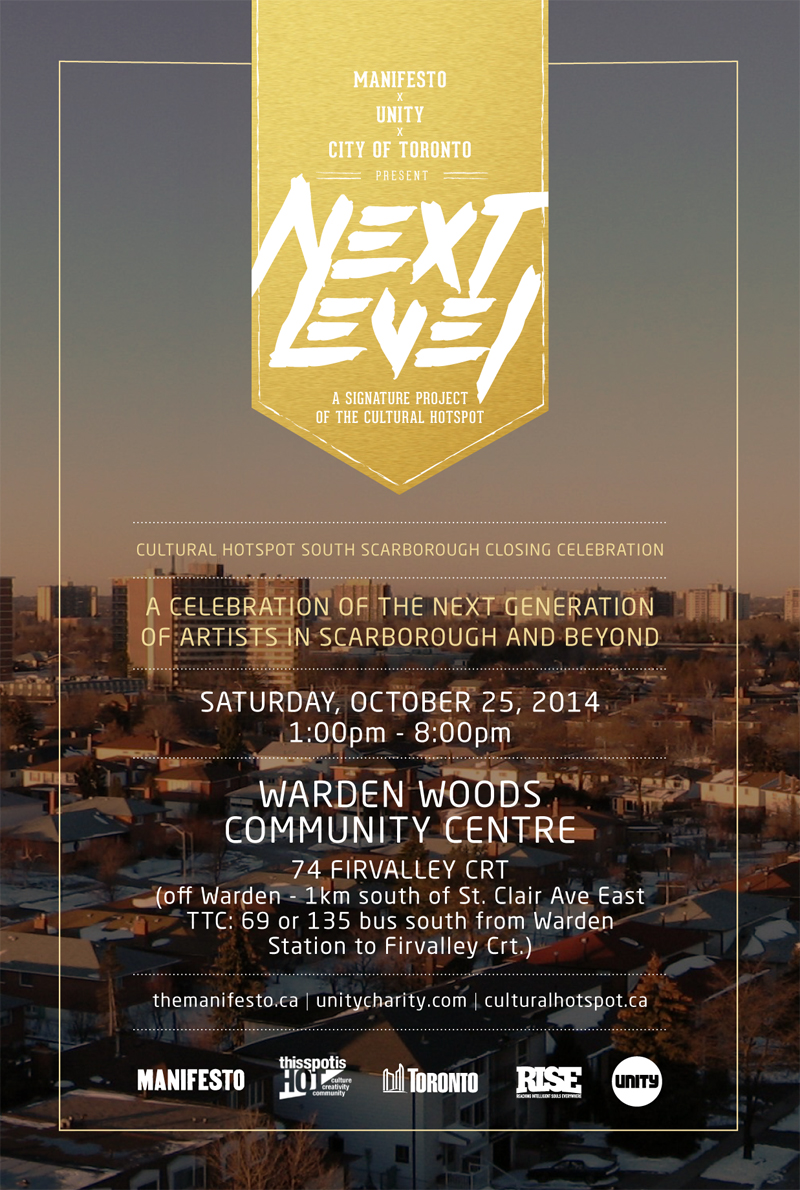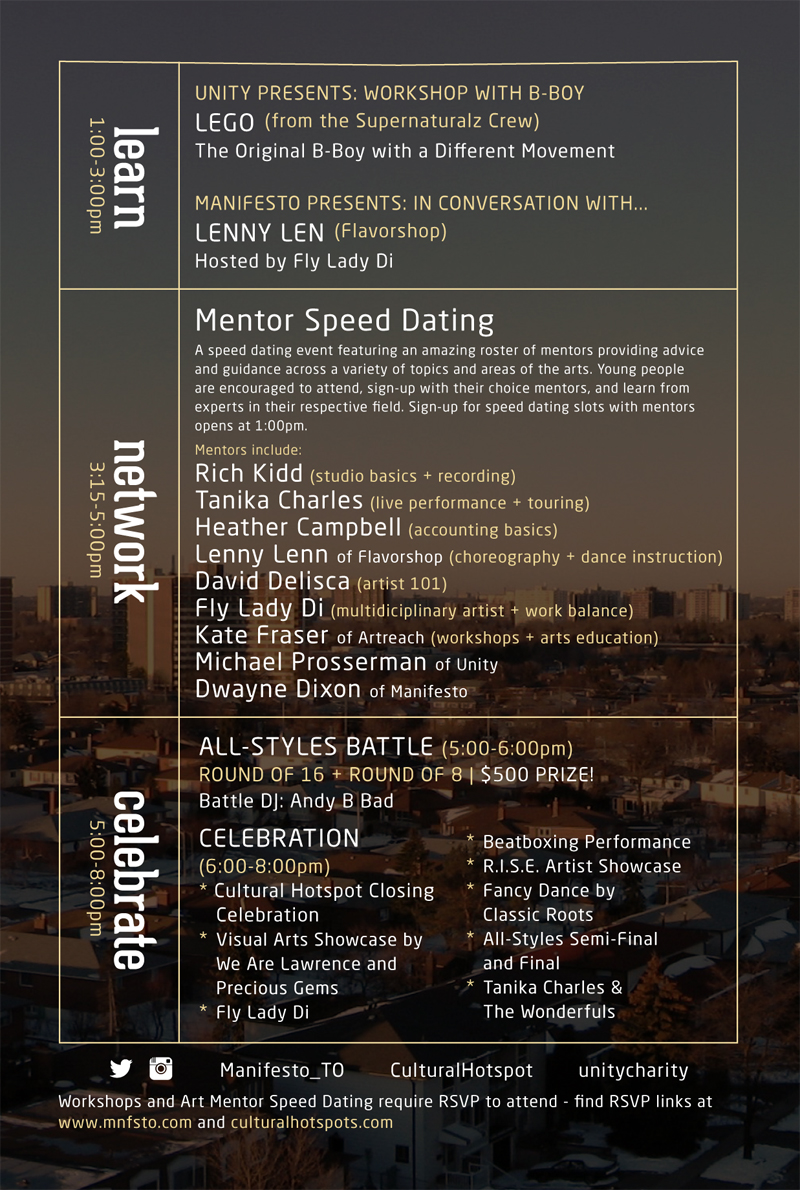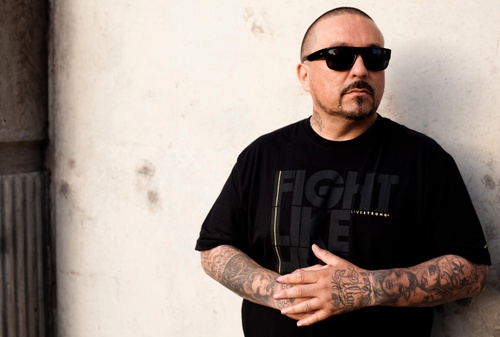by Chaka V. Grier
Mister Cartoon will be exhibiting and painting live at
The 8th Annual Manifesto Art Exhibition
Thurs, Sept 18 @ Steamwhistle Brewery


“The advice [my mentors] told me, I tell other people. Like, “Take the cotton out your ears, put it in your mouth. Sit on your hands and listen.” I can only keep what I have got by giving it away. For all the people out there that withheld ideas and kept secrets, I am here to give away those ideas and do the opposite.
Mister Cartoon’s work adorns the forms of some of the most celebrated athletes and performers of our time ─ the shortlist includes Beyoncé, Justin Timberlake, Kobe Bryant, 50 Cent and Travis Barker.
Born Mark Machado in Los Angeles, Cartoon got his start as a graffiti street artist, muralling and silk-screening. Early on he drew upon a collection of diverse influences to create his legendary style ─ “fine-line” tattooing (a technique originated by inmates in the California prison system), retro signage, Old English gothic lettering, New York style graffiti, and classic car culture. Originality and intricacy became his calling card and by the mid-1990’s he was one of the most sought after tattooist. (He’s also the designer behind the iconic Cypress Hill logo.) But it was his tattoo for Eminem, a black and white portrait of the rappers daughter, Hailie Jade that placed his art squarely in the realms of music, fashion and pop culture, as well as bringing his work to the attention of brands like Nike and Toyota.
Today, Mister Cartoon continues to showcase the street culture he loves and his singular style in standout collaborations, in addition to expanding his multi-faceted brand. Mister Cartoon will be headlining Transcension, Manifesto’s 8th Annual Art Exhibition on September 18 at the Steam Whistle Roundhouse (255 Bremner Blvd.) from 7pm – 2am. Tickets available here. (http://mnfstoart.eventbrite.ca/ )
What is the story behind the moniker Mister Cartoon?
It’s a nickname that I got in high school, from all of my friends at the time. I carried it on into my adult life and career. I put Mister in front of it to act older, but all my homies would just call me Toons. I eventually grew into the name some years later.
You started identifying yourself as an artist at 8 years old. What kind of art did you gravitate to at that age? Who were your influences growing up?
When I was 8, I would draw like everyone else in school, the only real difference was that I drew every day and practiced all the time, while other kids lost interest. So by the time I was 12 years old, I was already confident enough to draw on different surfaces and draw different subjects. It wasn’t until I was a teenager that I first picked up a spray paint can and my life changed from then on. There was no looking back.
From a young age my art influences were varied. An early influence was Hajime Sorayama, a Japanese illustrator. I was also influenced by a local car muralist named Ron Tess. I had other general influences, like street murals and comic books, as they were my only form of reference at the time. I always loved vintage signage and gold leaf letters.
Graffiti and tattoo work are often outlets for youth from disadvantaged backgrounds, who are not art school trained, to express and see their artwork in the world. Was that the same for you?
I started muralling walls when I was 16 years old. Graffiti gave me the desire to attack large scale walls and be a voice in the streets. I was able to cover two-storey buildings, which I would have never done without a spray paint can.
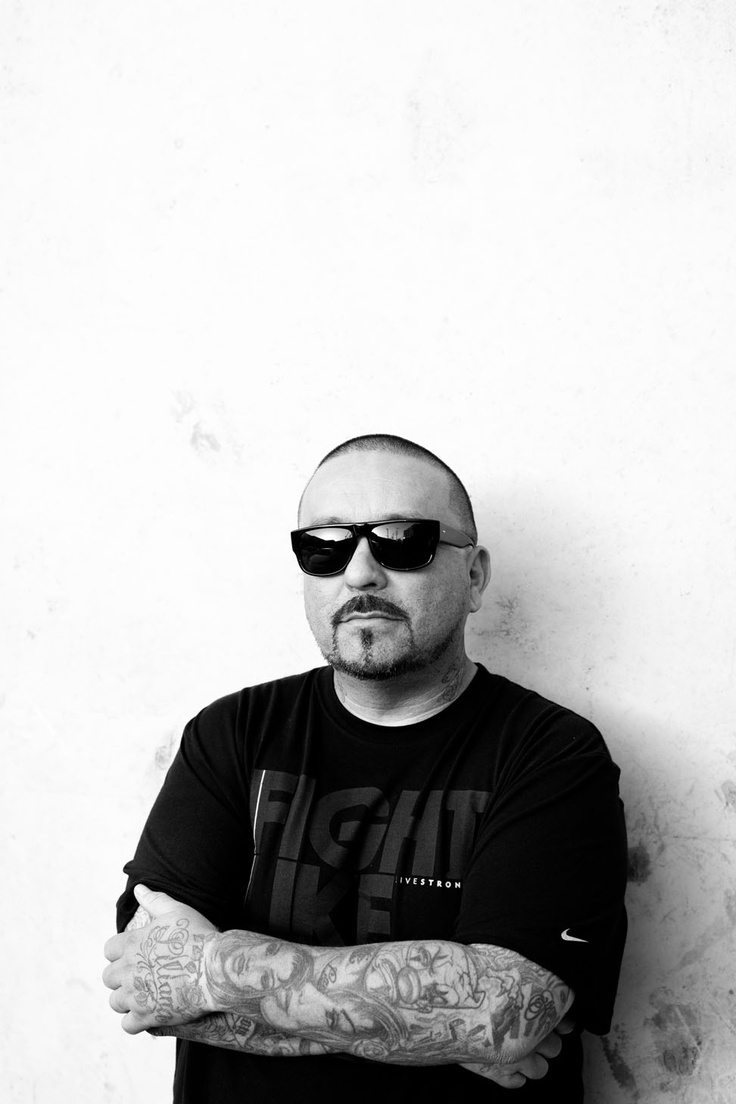
What made you decide that you wanted to take your art to skin? Did that feel like a natural transition? Or was it intimidating?
It is a natural transition for a graffiti writer to become a tattoo artist, I think it always has been. However, I didn’t start tattooing until I personally got a lot of tattoos myself. Tattooing is very intimidating. [With] graffiti, if you don’t like something you can easily buff it out, but with skin you don’t have that option, it makes tattooing an intimidating medium.
From your start as a graffiti artist in the 1980’s to becoming an iconic tattoo artist, your career has been built on life canvases–city walls, human bodies, cars–objects that move, change, age and decay. Though your work has crossed many platforms, I read that your favourite canvas is on restored vintage cars. Why do you find that such an interesting object to work on?
On the West Coast we were raised with classic cars. I loved muralling cars because they drive around the city–this is an expression of movement and fluidity–and my art gets maximum exposure. It was a way for me to showcase my work in the late ‘80s and ‘90s that was different from everyone else.
Was there a moment when you realized that your work was reaching far beyond your community?
When I started to travel abroad. It was crazy to me that people would recognize me or my artwork on the other side of the world. I think going to Tokyo in the ‘90s opened my eyes to the global movement of hip hop and gave me an idea of a larger audience. I would say doing commercial projects that have nothing to do with street art or tattooing, really let me know that there was a bigger art community and audience than just my local area and field.
You’ve discussed that in your early days as a street artist, you only cared about paying your bills, getting from A to B and being left alone. How did it feel to go from an artist working in street art culture exclusively to major partnerships with mainstream corporate organizations like Microsoft, Nike, Diesel, Universal Pictures and Fox Studios? Did you ever imagine that that would happen? Did you have to learn to be open to greater “success” on an international level?
As a young graffiti writer you always want to be hard-core with a f— the government, f— corporate America, and f— your parents philosophy. Now that I have my own kids and I travel more, I have an open mind to the larger scale of life. To me as long as my artwork is hard-core, I can team up with companies and work with some of these larger organizations. I back up the products that I believe in and the companies that I like, I think they and I don’t feel like I am selling out because I believe in the art. I have turned down more projects than I have taken on and I continue to choose carefully [the] projects that I am into.
Since the 1980’s street art/music/culture has become increasingly influential in society and the world. Why do you think this has happened to such a mass degree?
I think people want to express themselves through music and art. The music is at the centre of hip-hop and that really connects all of us together–the movement of self-expression spread around the world through hip-hop.
I think it also happened [because] we were all connected through books and print publications when I was younger, and that was our source of reference. However, the internet changed all that. Now your average person knows a lot of niche street artists that they would never have heard about before, and anyone can, in today’s society, have an outlet for their work on the internet.
In one of your interviews, you mentioned that in your early days, your mentors refused to teach you the art of tattooing until you gave up booze, smoking weed and the party lifestyle. They demanded commitment and you committed. How important was that early mentoring for you? And do you feel that that kind of mentoring is
lacking today?
Mentoring is very difficult. It’s hard to find someone who can take direction and listen. I am always mentoring nowadays, it’s mainly my own children. It was very hard for me to find mentors when I was young that were artists. A lot of my mentors initially didn’t draw but they had something in their personality that I wanted or
respected. A lot of times a mentor can [also] be someone you don’t like or drama that you’re going through in your life. For me, mentoring, coming up, gave you your foundation that you built your career on. The advice they told me, I tell other people. Like, “Take the cotton out your ears, put it in your mouth. Sit on your hands and
listen.”
Everyone wants to be a brand nowadays. What tips would you give young artists, growing up in the Instagram era, who dream of the success you’ve achieved?
My advice to them is to do something different. So many movements are played out and over saturated–here today, gone tomorrow. Do something unique, that’s how you stand out. Also for a young artist I would tell them that there is no shortcuts. Nothing replaces time taken, practice, and hard work.
Community, youth and outreach are very important to you, as well as your brand. What does it mean for you to be part of a festival like Manifesto, which celebrates the culture that you have helped build?
These types of festivals and events are so important. They celebrate and create conversations amongst artists in the urban community. It’s an honour for me to come and build with young people, [talk to them] about the future, and share my experience and strategies with them. I can only keep what I have got by giving it away. For all the people out there that withheld ideas and kept secrets, I am here to give away those ideas and do the opposite. I challenge the youth– here is the information, go get it, and do it.


